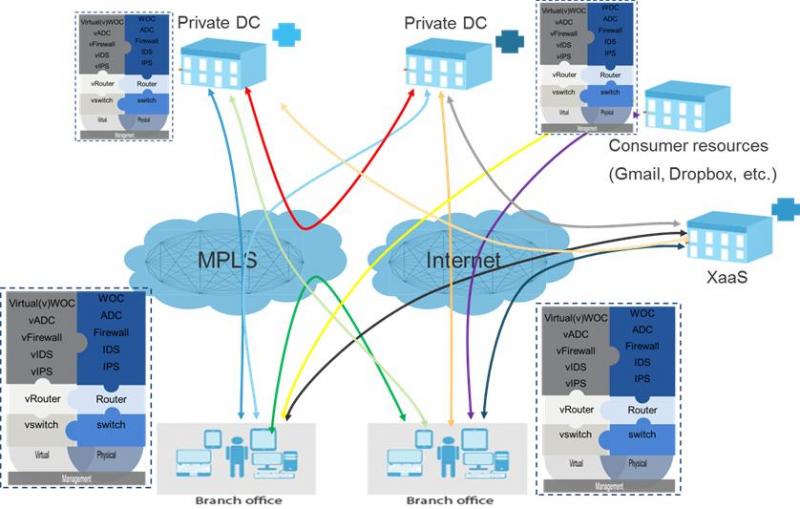Networking Is A Hot Mess
A few weeks ago, Cisco announced plans for its “spin-in” investment, Insieme Networks: The newest next-generation data center network called, Application Centric Infrastructure (ACI).This new offering includes hardware (the Cisco Nexus 9000 series), new firmware (enhanced version of NX-OS), and a new controller (Application Policing Infrastructure Controller).
Even though Cisco’s ACI launch indicates the magnitude of disruption software-defined networking (SDN) is causing in the industry, and Forrester has provided our quick take on this announcement, I think we have a much bigger story at play here. We are only at the beginning – not middle or end – of sorting out the hot mess that networking is in. And for good reason. The network is the only technology in the business that touches every person, device, and aspect of the business. With that said, networking professionals are trying to support the data center team’s request for a private cloud, employees bringing their own devices and applications to work, and the business circumventing infrastructure and operations for backup-as-a-service or software-as-a-service. Don’t even get me started about the Internet of Things shifting the ownership of the network to non-information technology (IT) personnel or the business opportunity it could bring.
But here we are five years after the introduction of the network fabrics, still focused on the data center trying to create a simple, scalable, shared, secure, and standardized platform that connects servers. But let’s not pretend we aren’t at fault. We find it too easy to go back to our comfort zone and, hence, have spent too much time arguing over the definition of SDN, OpenFlow benefits, and the future of open vs. proprietary solutions. Here’s the ugly truth. No matter how you try to argue it, it’s not a technology decision. Just as VHS dominance over Betamax wasn’t one either.
Taking a bit of learnings from the Betamax-VHS format war, we should stop telling them about how SDN will free them from expensive networking hardware and tell them what they need to hear; infrastructure and operations professionals are struggling with connecting a mobile set of users to a very fluid set of applications and data that gives the business a competitive edge. This means a lot of the solutions that are being developed for the data center have to extend to the users, other data centers, and public cloud platforms – which means goodbye to hub-and-spoke designs where everything is centralized:

Juniper’s Metafabric announcement has started to bring awareness to the network outside of the data center. In turn, we can expect new architectures, products, management systems, and controllers that obsolete many SDN solutions that are available on the market today.
While you can buy the latest and greatest hardware and software, most of the SDN solutions won’t be enterprise-grade until all the components get released, which could take years. Furthermore, you won’t get the true value until you’ve done some housecleaning. Instead of spending the time deploying partial solutions dependent on a roadmap and unproven at this point, what do you think about investing your time and effort on improving your operations?
Here are three areas to start:
- Industrialize your operations. No set of automation software will help if the operations are not industrialized. To get started from a people and process perspective, use Forrester's Service Manage and Automation Assessment Framework to assess the current state of key operational and process activities, and then standardize processes and skills around ITIL.
- Build out your infrastructure visibility. SDN or any orchestrated, closed-loop system can’t work without a controller, infrastructure, and sensor (monitoring). But I&O teams usually spend far more resources on new networking solutions than they do on monitoring — and now more than ever. That's a mistake. Fully visible infrastructure will give a better edge on choosing the best SDN solution for your business.
- Develop a training road map to handle new technology. Yes, we’ll still need CLI gurus, but we need system engineers and network personnel who have coding skills. In addition to growing the purview of tactical management tasks and daily operations, it’s critical to create a road map that addresses development and transition of skills around newly implemented technologies. Therefore, outline: 1) what kinds of certifications your IT staff needs and how frequently they should receive them, and 2) what technology training is suited for them.
I can say with confidence that your operational efficiencies will be greater than what most SDN solutions can provide today.
